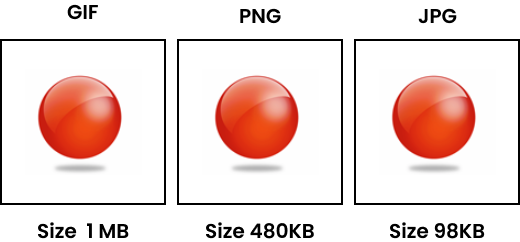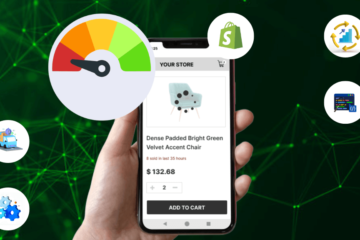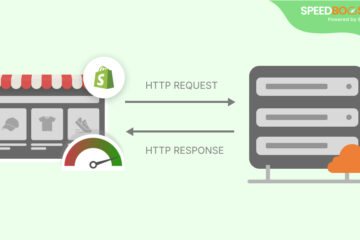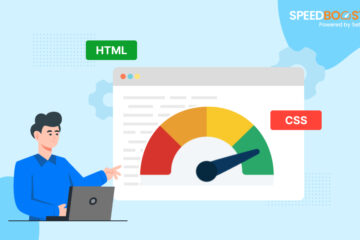Welcome to the ultimate beginner’s guide on Shopify Image Optimization! As an online store owner, you already know the significance of captivating images in attracting potential customers and boosting sales.
However, if your images are not optimized, they might slow down your website, leading to frustrated visitors and missed opportunities. In this comprehensive guide, we’ll talk you through the important steps for image optimization tips that would definitely help to resolve your query on How to Improve your Shopify Speed Score.
From understanding the importance of image optimization to implementing best practices, we’ve got you covered. So, let’s dive in and optimize your Shopify store’s image to enhance your customer’s shopping experience and drive more conversions.
What is Shopify Image Optimization?
It refers to the process of improving and deleting the file size of images used on a Shopify website and improving loading times and overall performance. Compressing images without compromising its quality ensures a smoother browsing experience for visitors. This practice is crucial for boosting SEO rankings, increasing user engagement, and ultimately driving more conversions on Shopify eCommerce platforms.
Why is Image Optimization Important for your Shopify store?
Shopify Image optimization is important for your online store success. Optimized images enhance performance, loading speed, and user experience, leading to increased customer satisfaction, lower bouncing rates.
Apart from that, it would also help you to improve search engine rankings. With Swift and seamless website loading ensures a positive shopping journey for visitors, making them more likely to stay and convert.
When optimizing images for your Shopify store, selecting the right image format is vital. Three common formats are JPG, PNG and WebP. Each format has its unique features, and understanding them will help you make the best choice for your images.
- JPG: Ideal for photographs and images with complex colors, JPG offers a good balance between image quality and file size. Adjust the compression level to find the sweet spot between image clarity and loading speed.
- PNG: Perfect for images with transparency or a limited color palette, PNG ensures crisp graphics but can lead to larger file sizes. Use PNG format for logos, icons, and images with sharp lines or text.
- WebP: This modern format is gaining popularity for its superior compression and image quality. However, WebP might not be supported on all browsers. Consider using WebP for supported platforms to achieve optimal results.
How to do Shopify Image Optimization
So now, let us discuss the most in-demand question that helps you to understand these things in a much more clear and precise way.
Use Exact and Direct Names for Image
For effective Shopify Image Optimization, it’s vital to use descriptive, keyword-rich file names rather than relying on default camera assignments. This practice enhances image SEO, helping your webpage in ranking higher on search engines.
By incorporating relevant keywords into your image file names, you increase the chances of search engine crawlers recognizing and indexing your images, ultimately boosting your online visibility and driving more traffic to your website.
In Image optimization, it’s essential to use descriptive and customer-centric filenames for images. Instead of generic names like DCMIMAGE10.jpg, opt for more relevant titles like Nike-Red-jordan.jpg.
This helps shoppers find products easily using common search terms such as:
- Nike Jordan
- Nike Red Air Jordan.
- Red Air Jordan Nike.
By incorporating these search patterns into the filenames, you improve discoverability and enhance the overall shopping experience on your website.
Correct Alt Attributes
Alt attributes serve as text alternatives for images when they cannot be displayed correctly, aiding web accessibility. Additionally, they offer SEO benefits, particularly for eCommerce websites like Shopify. Incorporating relevant keywords into alt attributes for images on your site can enhance search engine rankings.
By doing so, you increase the chances of your Shopify product images appearing in Google image and web searches, thereby boosting visibility and potential sales. Remember to focus on proper Shopify Image optimization to maximize these advantages.
Let’s understand the source code of the alt attribute.
<img src=”Red-Air-Jordan-Nike.jpg” alt=”Red Air Jordan Nike”>
Boost your image’s appeal and SEO impact! Top priority: complete the alt attribute for every product image on your site. Elevate your visuals and captivate your audience effortlessly.
Let’s understand the some simple rules for your alt attributes:
- Similar to how you named your image file names, describe your images in simple terms.
- Use model or serial number information in your alt attributes if you offer items that have them.
- Alt attributes should not be used for ornamental images. In case of excessive optimization, search engines may penalize you.
Embrace periodic sanity checks! Take a moment to peek behind the curtain of your webpages, ensuring alt attributes are richly descriptive. Amidst entrepreneurial speed, surprising details can elevate your online allure.
Select the Right Image Format
Talking about the three common file types and which can be used to post the images to the web:
I) JPG.
II) GIF.
III) PNG.

If you look at the given above image, you can say that if you are able to meet your requirements, then JPG is something that you can consider. Although, let me tell you the functionality of these image types that help you to understand these things in a much better way.
- GIFs, short animated images, enhance digital content, conveying emotions, humor, and information in a captivating, looped format. Ideal for expressing and engaging.
- PNG images, known for their lossless compression, maintain image quality. They support transparency, making them perfect for logos, web graphics, and images with intricate details.
- JPG images, known for their compression efficiency, display rich visuals with small file sizes. It’s ideal for photos and galleries, they balance quality and web performance seamlessly.
Improve your Product Thumbnail
Discover a captivating array of products on our ecommerce site, featuring alluring thumbnail images on category pages, maximizing space while showcasing endless possibilities.
Discover the power of captivating thumbnails. While they enhance your shopping experience, beware of their silent threat: slow page load speeds. Picture this- an enticing at crucial points during your shopping journey. However, if they hinder quick-loading category pages, you risk losing potential customers.
Fear not, Shopify merchants. We’ve got your back. With our expert optimization, your thumbnails will entice without compressing speed, ensuring a seamless shopping delight for all.
Implement Image Sitemaps
Enhance your site’s visibility on Google and captivate visitors with stunning imagery. Introducing our secret to success: Image Sitemaps. Unleash the power of JavaScript galleries, mesmerizing image pop-ups, and flashy shopping experience.
Our image sitemaps ensure Google’s crawlers find and showcase your hidden gems. Don’t miss this opportunity to take your online presence to new heights. Simply insert this irresistible line into your robots.txt file:
Sitemap: https://example.com/sitemap_location.xml
Be the first to talk of the digital town and watch your visual heights soar on Google’s search results. Join the sitemap revolution today and let your images shine like never before.
Unlock the full potential of your website’s images with Google’s powerful image SEO guidelines. Elevate your rankings on search engine result pages (SERPs) and captivate your audience with visually stunning content.
Empower Google to discover and showcase your images by utilizing Google sitemaps, providing vital information, and incorporating specific tags for each image.
While it’s not a guarantee, this positive step will undoubtedly boost your chances of indexing success. Embrace Google Webmaster Tools expert suggestions for crafting a perfectly formatted sitemap.
Create a separate sitemap exclusively dedicated to images, enriching it with all necessary details and specific tags. Take the leap towards enhancing your image SEO, and let your captivating visuals shine across the digital landscape.
Resize Your Images
When it comes to resize the images of your Shopify store you need to consider certain things that helps you to understand in better way:
- As per BBC News Report, 45%~50% of customers won’t wait even for 03~04 seconds for an eCommerce site to load.
- The average page loading time is actually increasing and it’s a serious concern.
- Amazon had a survey and found that, if the site is slowed down by just one second, then they would lose $1.6 Billion in Sales on an annual basis.
- As per the algorithm of Google, the page loading time is also considered an important ranking factor.
I think these facts are enough to make you understand that, if the size of the images are large the longer it will take a webpage to load. Remember that, if you lower the file of the images of your webpages and ultimately enhance the loading speed of your webpage.
Even though there are multiple tools, which you can use for image editing and eventually helps you to load your image. For example, Adobe is a free image app for smartphones and tablets.
Unleash your creativity potential with this incredible image editing tool. While it may not boost all the desktop Photoshop features, rest assured, it covers all the essentials without breaking the bank. Dive into limitless artistic possibilities today.
Eliminate Heavy and Decorative Images
When it comes to websites, visuals play a significant role in captivating visitors. Decorative images, like background images, buttons, and borders, undoubtedly enhance the aesthetics. However, it’s crucial to be mindful of their impact on your site’s performance.
Optimizing decorative images is key to maintaining fast load times and ensuring seamless user experience. Slow load times can deter potential customers and hamper your website’s conversion rates. That’s why it’s essential to prioritize Shopify image optimization.
Take a moment to review all decorative images on your site and assess their file sizes. Embrace templates that effectively minimize these sizes without compromising on visual appeal. By doing so, you’ll boost your chances of securing the top spot in search engine rankings and enticing visitors to become loyal customers.
Let’s us discuss some of the important tips that helps you to reduce the file sizes of the decorative images such as:
- When optimizing images on your Shopify store, keep these tips in mind. Opt for PNG-8 or GIF formats for images with borders or simple patterns, ensuring they remain visually appealing while being lightweight.
- Whenever possible, utilize CSS to create colored areas instead of relying on images, promoting faster loading times.
- Don’t overlook large wallpaper-style background images; resize them intelligently to reduce file size without compromising image quality.
With the help of these guidelines for Shopify Image optimization can significantly enhance your website performance and search engine rankings.
Improve Technical and Aesthetic Product Images
When it comes to Shopify Image Optimization, finding the perfect balance between technical and aesthetic images is crucial. Understanding the distinction between the two can significantly enhance your product page.
Technical Images: These are the images that showcase the actual product. To optimize them effectively, consider resizing them appropriately and converting them into the right file type. This ensures faster loading times and better user experience.
Aesthetic Images: These images contribute to the overall appeal of your webpage, incorporating backgrounds, colors, and borders. While optimizing them, focus on enhancing product styling, design, and background colors to create an attractive visual impact.
By paying attention to both technical and aesthetic aspects of your images, you can create an engaging and optimized shopping experience for your customers, leading to better search engine rankings and increased conversions. Remember, a well-optimized Shopify store with captivating images can significantly increase your online success.
Test Images and Make Adjustments
Testing is crucial for any solution, especially when it comes to optimizing images for SEO. However, the process can be a bit intricate since you need to consider multiple factors.
One of the key aspects to ponder is the trade-off between page load speed and conversions. Improving one could potentially affect the other. So, finding the right balance is essential. Strive to strike a chord with your shoppers by maintaining an optimal number of images without compromising page load speed.
As you embark on testing, clarify your priorities and goals. Determine whether you prioritize enhancing page load speed and SERP performance or achieving higher overall website conversions. Then, conduct tests on various elements while making changes to your images to achieve the desired results for SEO Image Optimizer Shopify.
Image Optimization Tools
Now, let us discuss some of the best and in-demand tools that you can use for optimizing your Shopify Store:
1. TinyPNG
Discover the magic of TinyPNG, the ultimate image optimization wizard online! This tool wields the power of lossy compression, sprinkled with a touch of automation magic. Watch your images transform into sleek, web-ready masterpieces effortlessly. Unleash the enchantment now.
2. AVADA SEO
Discover the enhancing AVADA SEO, the beloved image optimization wizard for Shopify. With its spellbinding powers, it weaves seamless alt tags, swiftly compressing images, and conjures up sitemaps. Embrace the magic and watch your store’s visuals like never before.
3. TinyIMG SEO and Image Optimizer
Discover the magic of TinyIMG. This nifty image optimization wizard is every Shopify store owner’s dream come true. Watch in awe as it effortlessly optimizes and uploads your images, while also working its magic to fix those pesky technical SEO issues. Say goodbye to worries and hello to picture-perfect bliss.
Conclusion
SpeedBoostify provides several strategies to enhance image optimization for Shopify stores. Below is a table summarizing the key points discussed:
| Strategy | Description |
| Use Descriptive File Names | Assign keyword-rich, descriptive file names to images instead of default names to improve SEO and help search engines understand the content. For example, use “Nike-Red-Jordan.jpg” instead of “DCMIMAGE10.jpg”. |
| Optimize Alt Attributes | Provide clear and concise alt text for each image to enhance web accessibility and SEO. This practice aids search engines in indexing images and improves the chances of appearing in image searches. |
| Choose Appropriate Image Formats | Select the right image format based on the content: – JPG: Suitable for photographs and complex images due to good compression. – PNG: Ideal for images requiring transparency or with limited colors. – WebP: Offers superior compression and quality but may not be supported by all browsers. |
| Compress Images | Reduce image file sizes without compromising quality to improve loading times and overall site performance. Tools like TinyPNG can be used for this purpose. |
| Implement Lazy Loading | Load images only as they appear in the user’s viewport to decrease initial page load time and conserve bandwidth. |
| Leverage Content Delivery Networks (CDNs) | Use CDNs to distribute image content across multiple servers worldwide, ensuring faster delivery to users based on their geographic location. |
| Utilize Responsive Images | Serve appropriately sized images based on the user’s device to ensure optimal display and performance across various screen sizes. |
In the world of blazing-fast websites and skyrocketing sales. Our team of Shopify exports has the art of Shopify Image Optimization for SEO wizardry. With these 10 fantastic tips, we can supercharge your Shopify store effortlessly and believe me it’s definitely not rocket science.
Are you yearning for increased conversion and sales? Our Shopify maestros are just a click away, ready to work with magic. Unleash the power of our featured-packed, user-friendly toolkit designed to boost your conversion rates and skyrocket your sales, all without breaking the bank.
Join us now and witness your Shopify store transform into a captivating sales-generating wonderland. Our tips are easy to read, easy to implement, and sure to captivate. Let the adventure begin.




